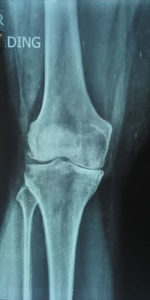Partial Knee Replacement Procedure
The Knee Specialist may choose the type of incision and implant to use for the patient’s knee. During the surgery, the knee surgeon may align the instruments to determine the amount of bone to remove. The surgeon removes bone from the shin bone (Tibia) and thigh bone (Femur).
The Knee Specialist may decide to check if they removed the proper amount of bone during the Partial Knee Replacement Surgery. In order to make sure that the proper size implant is being used, a surgeon may choose to use a temporary trial. After making sure the proper size implant is selected, the surgeon will put the implant on the ends of the bone and secure it with pegs. Finally, the knee surgeon will close the wound with sutures.
The Unicompartmental Replacement is a minimally invasive option for patients whose arthritis is isolated to either the medial or the lateral compartment. The procedure offers several benefits for patients with a moderately active lifestyle, who have arthritis in just one knee compartment, and who are within normal weight ranges.

Pre Operation X-Ray for Partial Knee Replacement Surgery

Post Operation X-Ray for Partial Knee Replacement Surgery
The Knee Specialist uses an incision of just 3-4 inches; a Total Knee Replacement Surgery typically requires an incision of 8-12 inches. According to Dr. Howard J. Luks, Associate Professor of Orthopedic Surgery at New York Medical College, the Partial Knee Replacement Surgery does not disrupt the Kneecap, which makes for a shorter rehabilitation period. A Partial Knee Replacement also causes minimal blood loss during the procedure and results in considerably less post-operative pain. The hospitalization time compared with a total knee replacement surgery is also greatly reduced.

